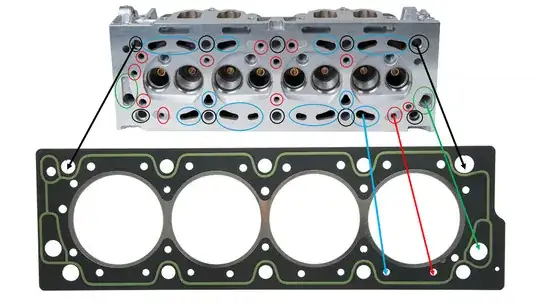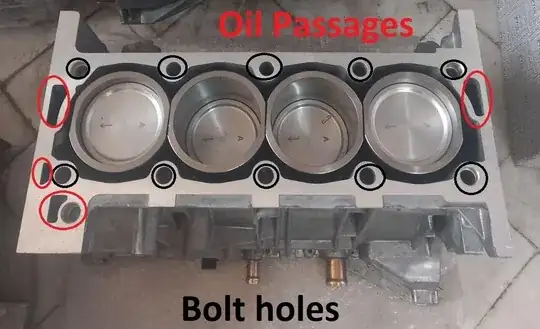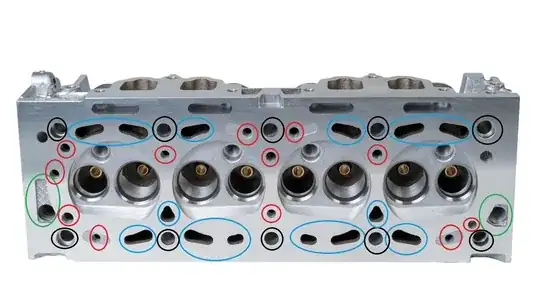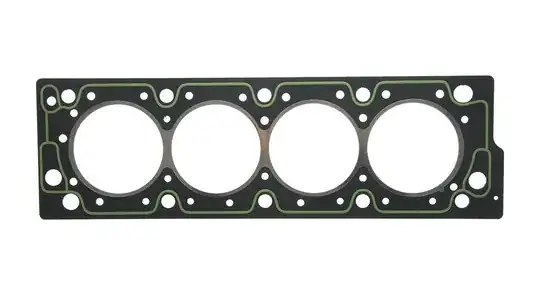Looking at the images you provided, I've added some arrows to help with my explanation. I've tried to match the arrow colors to the circle colors to help as well.
If you look at the two black arrows, these are bolt holes for the head bolts. There are ten total going around exterior of the cylinders, four bolts circling each cylinder (yes, six of the 10 bolts pull double duty in their clamping).
On the head gasket, you can see the light green stripe which winds its way around the outside of all of the cylinders, but inside of the holes for the bolts. This is important, because everything inside of this circle is wet (whether oil or water) and everything outside of it is dry. The light green stripe provides a seal against liquids escaping the engine.
The green arrow points to a large hole near the end of the gasket. There is the light green line which completely encircles this. This is the oil return hole, where oil can go back to the pan after it's done what it does in the top of the head. There are actually three of these holes, but there are only two circled on the cylinder head. The third hole is on the upper left end right adjacent to the bolt hole.
As you stated, this is an open deck block with wet cylinder liners. The coolant flows around it. If you look at both the red and light blue circles on the head portion of the image, you can see all of these fall within the coolant zone of the head gasket and align with the open areas of the block. All of these are coolant passages. They are just shaped a little differently than the larger holes which are circled in light blue. If you look closely at the head, you can see a sort of off colored area (a little lighter) which is around the round holes circled in red. These areas are of the same size and shape as the larger ones circled in light blue. Why Peugeot did it this way I don't have a clue.




